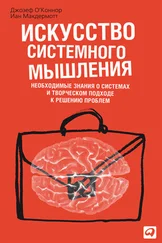Brouwer W. et al., 1991, Divided Attention in Experienced Young and Older Drivers: Lane Tracking and Visual Analysis in a Dynamic Driving Simulator, Human Factors 33 (5), pp. 573–582.
Brown A. S., 1991, A Review of the Tip-of-the-Tongue Experience, Psychological Bulletin 109 (2), pp. 204–223.
Brown A. S., 2007, author interview.
Brown A. S., et al., 2004, Generating and Remembering Passwords, Applied Cognitive Psychology 18, pp. 641–651.
Brown A. S., and Tamara A. Rahal, 1994, Hiding Valuables: A Questionnaire Study of Mnemonically Risky Behavior, Applied Cognitive Psychology 8, pp. 141–154.
Brown N. R., and Robert C. Sinclair, 1999, Estimating Number of Lifetime Sexual Partners: Men and Women Do It Differently, Journal of Sex Research 36 (3), pp. 292–297.
Brownlee S., 2007, Overtreated: Why Too Much Medicine Is Making Us Sicker and Poorer, New York: Bloomsbury USA.
Bruce V., and Andy Young, 1998, In the Eye of the Beholder: The Science of Face Perception, Oxford: Oxford University Press.
Burson K. A., 2007, Consumer-Product Skill Matching: The Effects of Difficulty on Relative Self-Assessment and Choice, Journal of Consumer Research 34, pp. 104–110.
Byrne C., 2000, Confused Vigilantes Attack Doctor’s Home, Chicago Sun-Times, Aug. 31, p. 34.
Byrne J., 2007, author interview.
Cain D. M., George Loewenstein, and Don A. Moore, 2005, The Dirt on Coming Clean: Perverse Effects of Disclosing Conflicts of Interest, Journal of Legal Studies 34, pp. 1–25.
Camerer C., 1998, Behavioral Economics and Nonrational Decision Making in Organizations, In Decision Making in Organizations, edited by J. Halpern and B. Sutton, Ithaca, N.Y.: Cornell University Press.
Camerer C., Linda Babcock, George Loewenstein, and Richard Thaler, 1997, Labor Supply of New York City Cabdrivers: One Day at a Time, Quarterly Journal of Economics 112, pp. 407–441.
Camerer C., and Robin Hogarth, 1999, The Effects of Financial Incentives in Experiments: A Review and Capital-Labor-Production Framework, Journal of Risk and Uncertainty 19, pp. 7–42.
Camerer C., and Eric J. Johnson, 1991, The Process-Performance Paradox in Expert Judgment: How Can Experts Know So Much and Predict So Badly? In Toward a General Theory of Expertise: Prospects and Limits, edited by K. Anders Ericsson and Jacqui Smith, Cambridge, U.K.: Cambridge University Press.
Camerer C., George Loewenstein, and Martin Weber, 1989, The Curse of Knowledge in Economic Settings: An Experimental Analysis, Journal of Political Economy 97 (5), pp. 1232–1254.
Camerer C., and Dan Lovallo, 1999, Overconfidence and Excess Entry: An Experimental Approach, American Economic Review 89 (1), pp. 306–18.
Campanelli J., 2006, I Forget My Password! With More and More Codes to Clutter Our Brains, It’s a Wonder We Don’t All Crash, Plain Dealer, Sept. 3, p. L1.
Caplan J., 2007, Cause of Death: Sloppy Doctors, Time, Jan. 15.
Carbaugh D. C., 2008, personal correspondence.
Cash J., 2005, Specialist’s Factual Report of Investigation, National Transportation Safety Board, Accident No. IAD05FA023, Oct. 18.
Chapman G., and Brian H. Bornstein, 1996, The More You Ask for, the More You Get: Anchoring in Personal Injury Verdicts, Applied Cognitive Psychology 10, pp. 519–540.
Chapman L. J., and Jean P. Chapman, 1967. Genesis of Popular but Erroneous Psychodiagnostic Observations, Journal of Abnormal Psychology 72 (3), pp. 193–204.
Charness N., 1991, Expertise in Chess: The Balance Between Knowledge and Search, In Toward a General Theory of Expertise: Prospects and Limits, edited by K. Anders Ericsson and Jacqui Smith, Cambridge, U.K.: Cambridge University Press.
Chase W. G., and K. Anders Ericsson, 1981, Skilled Memory, In Cognitive Skills and Their Acquisition, edited by John R. Anderson. Hillsdale N.J.: Lawrence Erlbaum Associates.
Chase W. G., and Herbert A. Simon, 1973, Perception in Chess, Cognitive Psychology 4, pp. 55–81.
Choi J., Erin McKillop, Michael Ward, and Natasha L’Hirondelle. 2006, Sex-Specific Relationships Between Route-Learning Strategies and Abilities in a Large-Scale Environment, Environment and Behavior 38 (6), pp. 791–801.
Christensen-Szalanski J. J. J., 1984, Discount Functions and the Measurement of Patient Values: Women’s Decisions During Childbirth, Medical Decision-Making 4, pp. 41–48.
Christensen-Szalanski J. J., and James B. Bushyhead, 1981, Physicians’ Use of Probabilistic Information in a Real Clinical Setting, Journal of Experimental Psychology: Human Perception and Performance 7 (4), pp. 928–935.
Christiansen R. E., et al., 1983, Influencing Eyewitness Descriptions, Law and Human Behavior 7, pp. 59–65.
Clarke N., 2006, Wynn Accidentally Damages Picasso, Las Vegas Review-Journal, Oct. 17, p. 3A.
Clothier M., 2006, Retailers Find Profit Windfall – Unused Gift Cards, Bloomberg News, Feb. 27.
CNN Interactive, 1997, Lack of Sleep America’s Top Health Problem, Doctors Say, March 17.
Cobb J. G., 2002, Menus Behaving Badly, New York Times, May 12.
Cohen G., 1990, Why Is It Difficult to Put Names to Faces? British Journal of Psychology 81, pp. 287–297.
Cohen G., and Dorothy Faulkner, 1986, Memory for Proper Names: Age Differences in Retrieval, British Journal of Developmental Psychology 4, pp. 187–197.
Conlin M., Ted O’Donoghue, and Timothy Vogelsang, 2006.
Projection Bias in Catalog Orders, American Economic Review 97 (4), pp. 1217–1249.
Corcoran D. W. J., 1967, Acoustic Factor in Proof Reading, Nature 214, pp. 851–52.
Corkery M., 2007, Home Myths Meet Reality, Wall Street Journal, Aug. 4–5, p. B1.
Cornell E. H., 2007, author interview.
Cornell E. H., and Deborah H. Hay, 1984, Children’s Acquisition of a Route via Different Media, Environment and Behavior 16 (5), pp. 627–41.
Cornell E. H., C. Donald Heth, and Lorri S. Broda, 1989, Children’s Wayfinding: Response to Instructions to Use Environmental Landmarks, Developmental Psychology 25 (5), pp. 755–64.
Cornell E. H., C. Donald Heth, and Wanda L. Rowat, 1992, Wayfinding by Children and Adults: Responses to Instructions to Use Look-Back and Retrace Strategies, Developmental Psychology 28 (2), pp. 328–336.
Cornell E. H., Autumn Sorenson, and Teresa Mio, 2003, Human Sense of Direction and Wayfinding, Annals of the Association of American Geographers 93 (2), pp. 399–425.
Cross J. F., Jane Cross, and James Daly, 1971, Sex, Race, Age, and Beauty as Factors in Recognition of Faces, Perception & Psychophysics 10 (6), pp. 393–396.
Dabbs J. M., Jr., et al., 1998, Spatial Ability, Navigation Strategy, and Geographic Knowledge Among Men and Women, Evolution and Human Behavior 19, pp. 89–98.
Dana J., and George Loewenstein, 2003, A Social Science Perspective on Gifts to Physicians from Industry, Journal of the American Medical Association 290 (2), pp. 252–255.
Davis H. L., Stephen J. Hoch, and E. K. Easton Ragsdale, 1986, An Anchoring and Adjustment Model of Spousal Predictions, Journal of Consumer Research 13, pp. 25–37.
Davis R., 2006, «Wrong Site» Surgeries on the Rise, USA Today, April 18, p. D5.
Dawes R., David Faust, and Paul E. Meehl, 1989, Clinical Versus Actuarial Judgment, Science 243, pp. 1668–1674.
Dean C., 2005, Scientific Savvy? In U.S., Not Much, New York Times, Aug. 30.
Dean J., 2007, author correspondence.
Decina L., 2007, author interview.
DellaVigna S., 2007, Psychology and Economics: Evidence from the Field, Working paper.
DellaVigna S., 2008, author interview.
DellaVigna S., and Ulrike Malmendier, 2004, Contract Design and Self-Control: Theory and Evidence, Quarterly Journal of Economics 119 (2), pp. 353–402.
DellaVigna S., and Ulrike Malmendier, 2005. Paying Not to Go to the Gym. American Economic Review 96 (3), pp. 694–719.
Читать дальше
Конец ознакомительного отрывка
Купить книгу







![Джозеф Халлинан - Почему мы ошибаемся? [Ловушки мышления в действии] [litres]](/books/396902/dzhozef-hallinan-pochemu-my-oshibaemsya-lovushki-myshl-thumb.webp)




